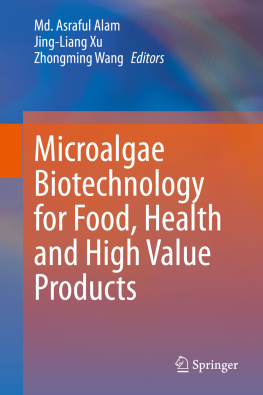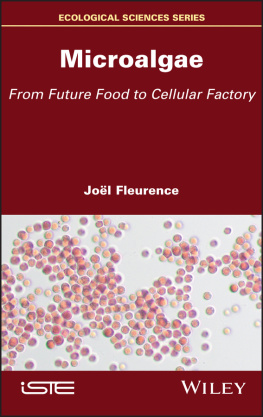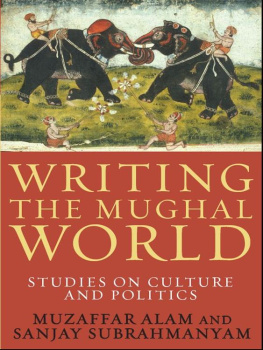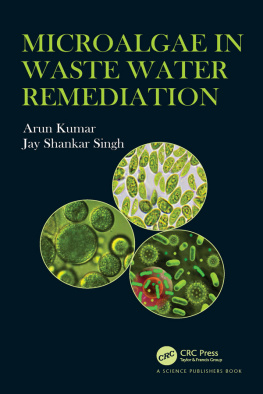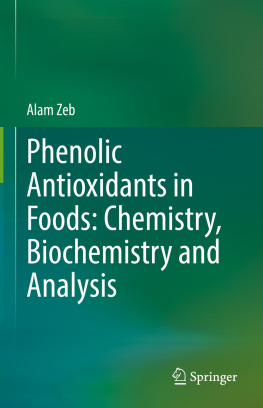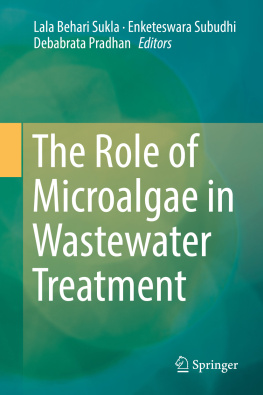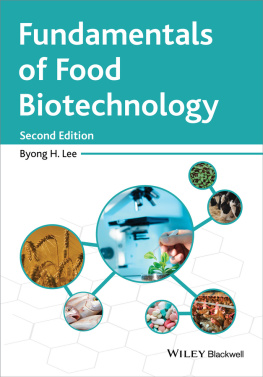Md. Asraful Alam - Microalgae Biotechnology for Food, Health and High Value Products
Here you can read online Md. Asraful Alam - Microalgae Biotechnology for Food, Health and High Value Products full text of the book (entire story) in english for free. Download pdf and epub, get meaning, cover and reviews about this ebook. year: 2020, publisher: Springer Singapore, genre: Home and family. Description of the work, (preface) as well as reviews are available. Best literature library LitArk.com created for fans of good reading and offers a wide selection of genres:
Romance novel
Science fiction
Adventure
Detective
Science
History
Home and family
Prose
Art
Politics
Computer
Non-fiction
Religion
Business
Children
Humor
Choose a favorite category and find really read worthwhile books. Enjoy immersion in the world of imagination, feel the emotions of the characters or learn something new for yourself, make an fascinating discovery.
- Book:Microalgae Biotechnology for Food, Health and High Value Products
- Author:
- Publisher:Springer Singapore
- Genre:
- Year:2020
- Rating:3 / 5
- Favourites:Add to favourites
- Your mark:
- 60
- 1
- 2
- 3
- 4
- 5
Microalgae Biotechnology for Food, Health and High Value Products: summary, description and annotation
We offer to read an annotation, description, summary or preface (depends on what the author of the book "Microalgae Biotechnology for Food, Health and High Value Products" wrote himself). If you haven't found the necessary information about the book — write in the comments, we will try to find it.
Microalgae Biotechnology for Food, Health and High Value Products — read online for free the complete book (whole text) full work
Below is the text of the book, divided by pages. System saving the place of the last page read, allows you to conveniently read the book "Microalgae Biotechnology for Food, Health and High Value Products" online for free, without having to search again every time where you left off. Put a bookmark, and you can go to the page where you finished reading at any time.
Font size:
Interval:
Bookmark:
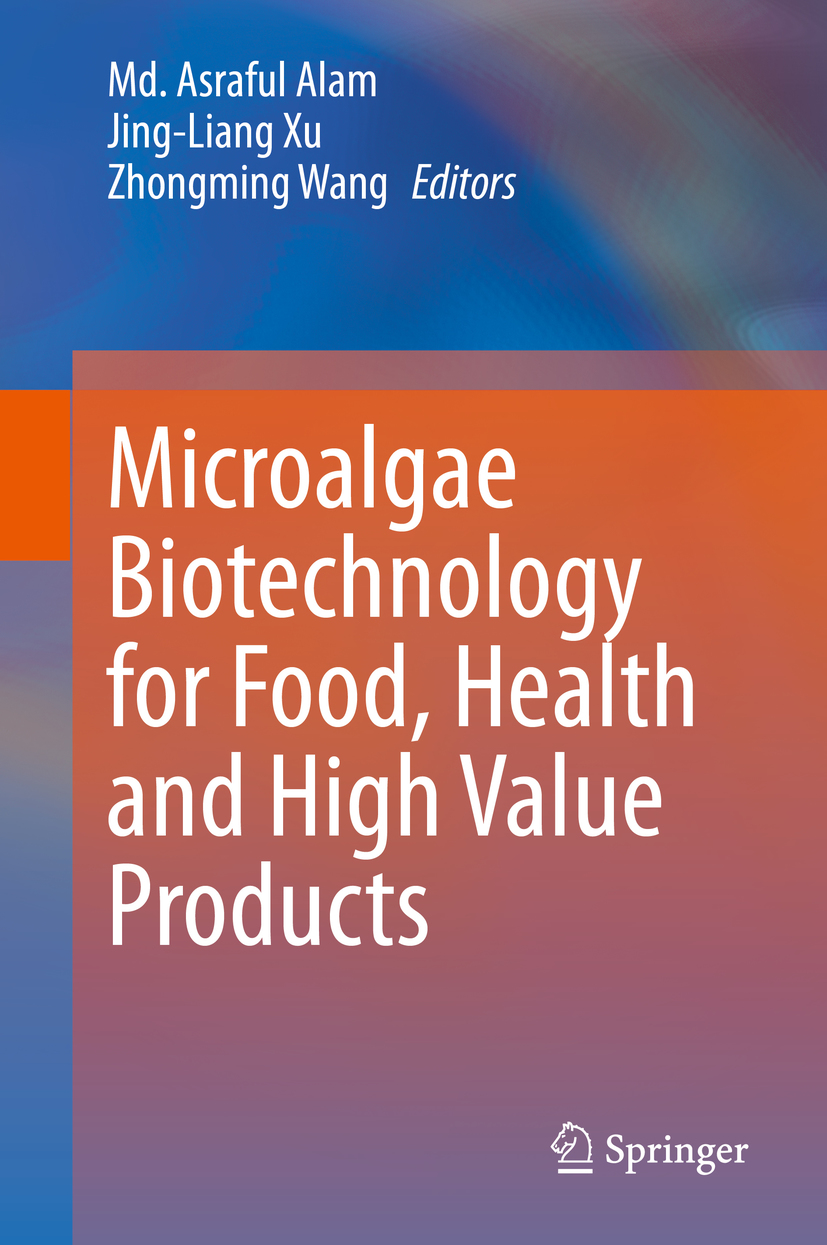

This Springer imprint is published by the registered company Springer Nature Singapore Pte Ltd.
The registered company address is: 152 Beach Road, #21-01/04 Gateway East, Singapore 189721, Singapore
This book is dedicated to my beloved parents, M.A. Sobhan and Rofia Sobhan.Actually, my parents live in a village in Bangladesh, so science books may not change their lives or be within their reach. But, my love towards them will remain noted for as long as this book lasts.
Md. Asraful Alam
Microalgae are predominantly fascinating sources of products ranging from human nutrition, food/feed additives, cosmetics, medicines, and health supplements to emerging sources including bioplastics, bio-based polymers, and vaccination agents for aquaculture organisms. The global market for microalgae products was valued at US$ 32.60 Bn in 2017 and estimated to reach US$ 53.43 Bn by 2026 ( https://www.credenceresearch.com/report/algae-products-market ). The major products currently being commercialized or under consideration for commercial extraction include human nutrition, animal and aquatic feed, phycobilins, -carotene, polysaccharides, polyunsaturated fatty acids, vitamins, sterols, stable isotope biochemicals, biologically active molecules of antimicrobial, antiviral, antibacterial, and anticancer drugs for use in human and animal health; however, more new items are likely to be produced in the following decade. Moreover, commercial algae production is being lauded recently as a new agricultural phenomenon that can provide sustainable feedstocks of proteins and oils for hundreds of new products, absorb millions of tons of carbon dioxide, treat wastewater, and become a driver of economic growth around the world. Our previous bookMicroalgae Biotechnology for Development of Biofuel and Wastewater Treatmentaddressed microalgae, which represent a very promising biomass resource for wastewater treatment and producing biofuels; in that edition, we have vastly presented the culture and harvesting technology of microalgae in fresh or in wastewater either in open or close system. This book,Microalgae Biotechnology for Food, Health, and High Value Productshas focused only on the various applications of microalgae ranging from human nutrition, food/feed additives, cosmetics, medicine and health, soil improvement, etc. It provides coverage of relevant, up-to-date research assembled by a group of contributors who are dedicated to the advancement of microalgae applications for human kind. We believe that this book will be greatly helpful for commercial algae producers, algae product developers, scientific researchers, students, or community people who are dedicated to the advancement of microalgae biotechnology for health, diet, nutrition, cosmetics, biomaterials, etc.
Microalgae are a potential source of molecules for a wide range of food and novel high-value products and have good market opportunities. They can be used in biofuels, health complements, feed, medicine and cosmetics. The development of innovative and sustainable technologies with minimum energy inputs is required for large-scale cultivation and downstream processing of lipids and hydrocarbons in order for the production to be economically viable. In addition, the viability of bioenergy production from microalgae biomass is contingent on the net energy gain of the overall process, with exhaustive utilization of algal biomass for biofuel and other co-products for feed, food, and chemicals. The energy output from the biomass as fuel has to be greater than the energy required to produce and process the algae. Microalgae produce a comprehensive variety of bioproducts such as enzymes, pigments, lipids, sugars, vitamins and sterols. Moreover, its capability to alter atmospheric CO2 into beneficial products such as lipids, carbohydrates, metabolites and proteins cannot be overstated. The key challenges appear to be high cost of operation, infrastructure and maintenance, selection of algal strains with high protein contents, dewatering and commercial scale harvesting. Optimizing the manufacture and commercialization of microalgae value products depend also on numerous factors (such as market and financial affairs). There is limitation of authentic and reliable data and statistics of microalgae market opportunities which make it difficult to assess their actual potential. Long-term research is needed to develop systems for the production of sustainable algal-based products, as sustainability is a key concern especially for food, feed and fuel.
Font size:
Interval:
Bookmark:
Similar books «Microalgae Biotechnology for Food, Health and High Value Products»
Look at similar books to Microalgae Biotechnology for Food, Health and High Value Products. We have selected literature similar in name and meaning in the hope of providing readers with more options to find new, interesting, not yet read works.
Discussion, reviews of the book Microalgae Biotechnology for Food, Health and High Value Products and just readers' own opinions. Leave your comments, write what you think about the work, its meaning or the main characters. Specify what exactly you liked and what you didn't like, and why you think so.

